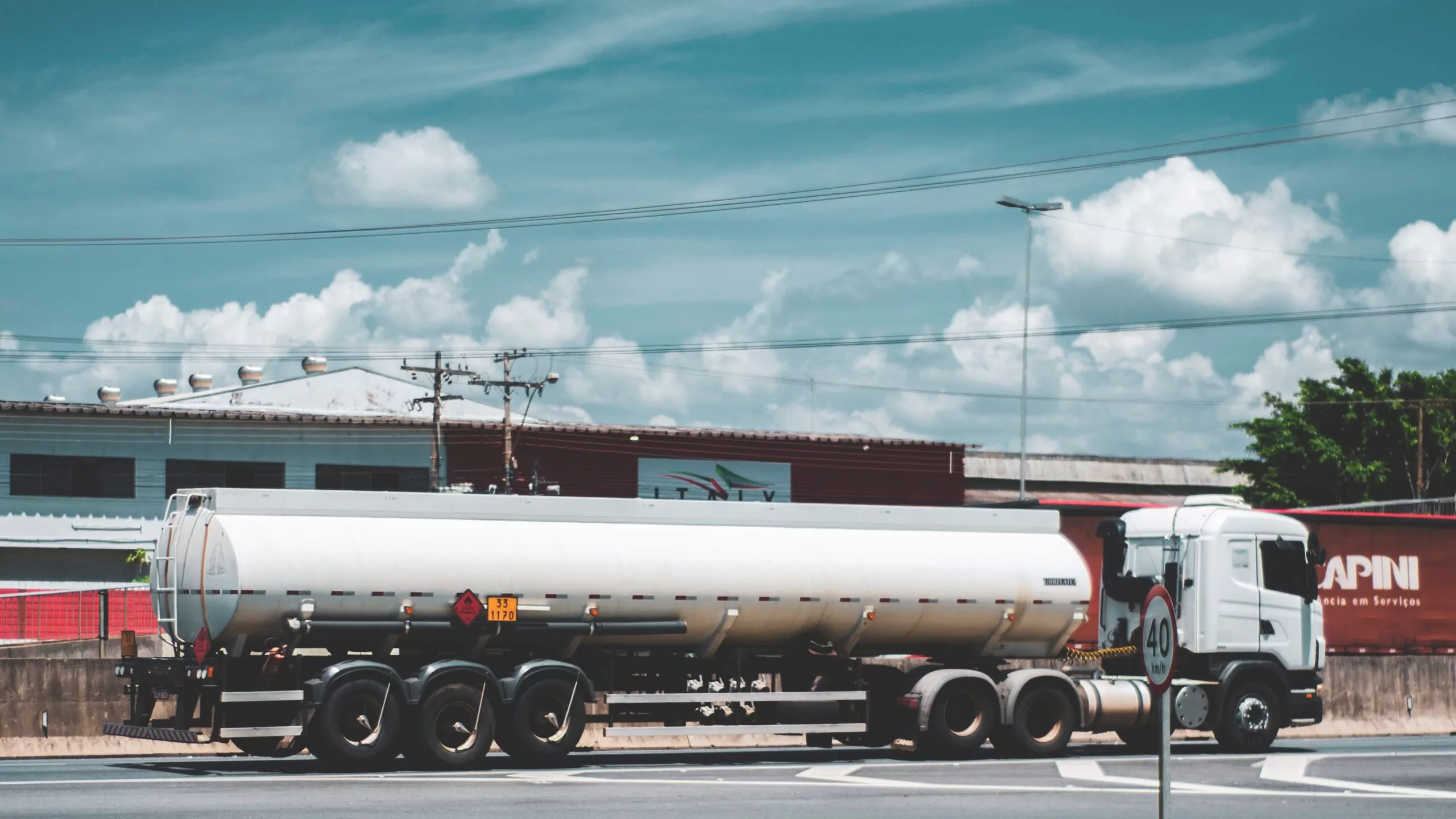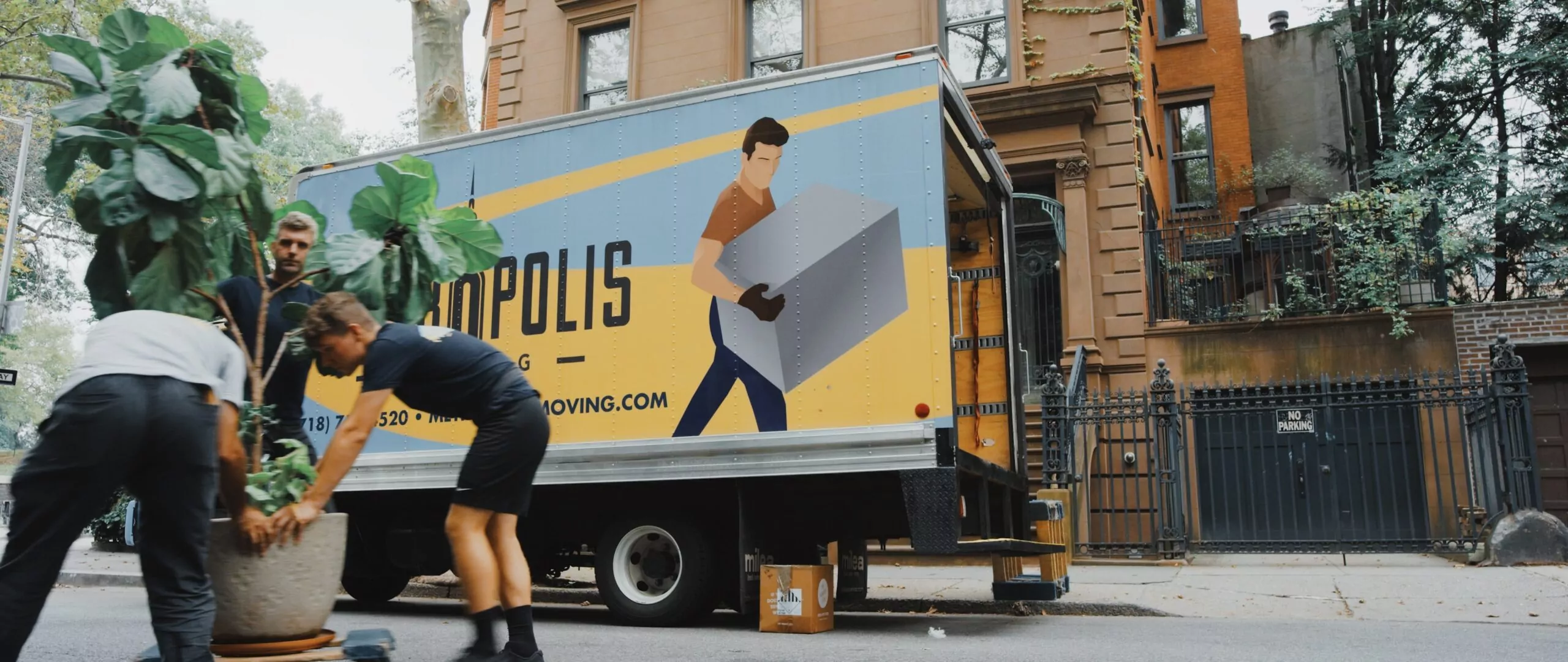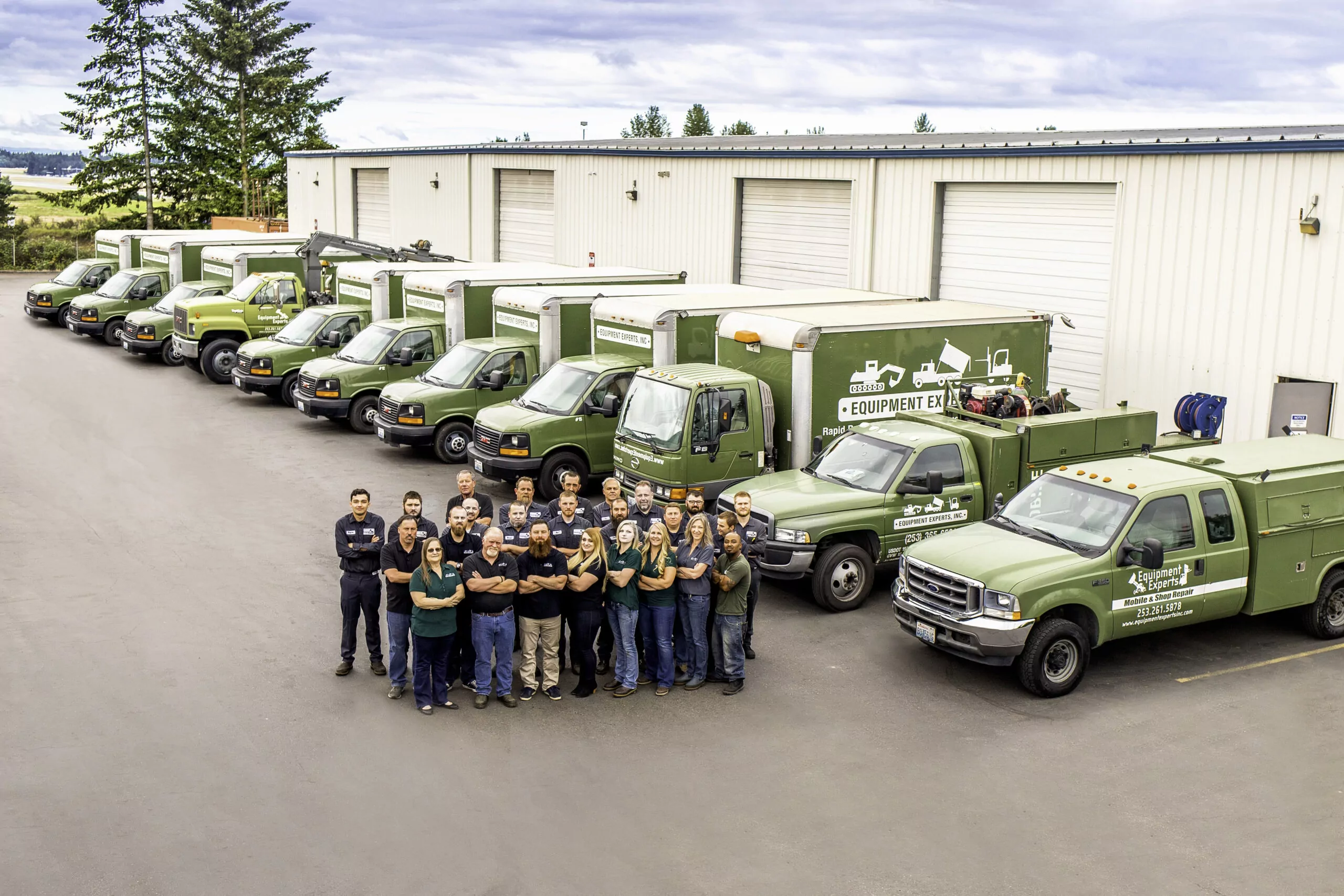
We’ve been doing some reflection here at Equipment Experts, Inc. (EEI). As we wrapped up the 2023 fiscal year on June 30th, we like to take stock of our wins and areas for growth in our goal to modernize our systems and better suit your needs. We’ve helped serve many customers and their trucks, which had us asking ourselves the following questions:
Exactly how many types of trucks are there? And what are they each used for?
Whether you’re a fleet manager, commercial truck owner, or more, it pays to know the different types of trucks, their uses, and what makes each truck unique from one another.
Let’s see if we can’t together become better equipped and more knowledgeable in pairing the right truck for the right job. Do you know all 21 types of trucks that exist? In this article, we’ll discuss:
Test your knowledge today with the 21 most common truck types on the market.
Some of the most popular and best-selling car sales in the U.S. market come from selling light-duty trucks.
Fun fact: Did you know that light commercial pickup trucks make up the bulk of light vehicle sales in the U.S. (research shows)?
Commercial pickup trucks — like the Ford F-series, Chevrolet Silverado, or Dodge Ram 1500 — are some of the most common trucks on the road.
These trucks include a small bed that is great for hauling recreational equipment, work gear, and so much more. Built as single-cab and double-cab, these trucks are great for work- and pleasure-related trips.
We serviced many pickup trucks this past year, but the bulk of our work is with larger-sized trucks — like panel trucks.
Specialty panel trucks and vans: these windowless trucks often have the most utility and have the lowest gross vehicle weight rating (GVWR) of any of the trucks that have made our sweet list of 21 trucks. You’ll often find these trucks carrying a variety of gear, gear requiring covering and insulation from the elements (such as rain, snow, or heat).
The best part is that these trucks weigh in at less than 14,000 pounds. Sounds hefty, right? Not when compared to a sizable tow truck.
The most helpful light-duty recovery truck you hope to never have to use in your life is the tow truck. Tow trucks are used to help move a vehicle from one location to the other in case of a breakdown.
These cars are very different from a car trailer carrier (spoiler alert: a trailer truck is also on our list of 21 trucks).
Fun fact: Did you know that the tow truck was invented in 1916 by a hard-working Ernest Holmes Sr.? After eight grueling hours (and six men using ropes and blocks) of work, Ernest pulled a broken-down truck out of a ditch. The experience was enough of a headache for him to spark the idea of inventing the tow truck (and thank goodness he did!).

Another type of truck that’s fast becoming a dying breed is the furniture truck. With some of the lowest rates of moving in over 70 years as of 2021, there’s a reason that furniture trucks aren’t being seen as often on the roads today.
While not particularly sturdy, these trucks are incredibly useful for loading and hauling furniture for immediate use. These trucks are most useful for moving house items and large furniture that would otherwise be transported on a more costly large-scale trailer.
With a single cab in the front of the truck, furniture trucks can transport passengers and cargo at the same time.
It may be summertime in beautiful Tacoma, Washington right now, but it’s the perfect time to service your snow equipment. That’s because when winter comes, you’ll want to make sure your equipment is up to date and ready for action — especially when the going gets tough.
That’s what these simple, yet incredibly useful trucks are made for: clearing snow from roads. These are vehicles that mount underbody scrapers below the truck — and a plow to the grill of the truck — to plow through snow.
Fun fact: Did you know that the first snow plows were originally used in the early 1800s — and were pulled by horses? The latest mechanical plows weren’t first introduced until a little more than a hundred years ago. We’ve come such a long way from then!
Winter is a long way away from us, but it never hurts to do a little preventive maintenance to keep your fleet in check. For now, though, you’re more likely to see a low loader named boat haulage winding its way through your summer interstate drive than a plow.
As the name suggests, this truck is used to transport large loads called boat haulages. While not especially speedy, these transport trucks are extremely stable and able to carry some of the heaviest boats on the planet.
While a pickup truck or SUV can carry a smaller boat, boat haulage trucks are reserved for large nautical vessels that require additional support.
Those large cylindrical devices you see spinning on the back of a truck? Those are called concrete mixers, they’re made with steel and fiberglass, and they’re mounted on the back of a dependable cement truck.
These trucks mix cement and water to make concrete. The steel drums spin slowly and constantly to keep materials from drying up.
These trucks pour the concrete — out the rear of the concrete drum — to be placed in designated spaces.
One of the most recognizable (and kid-friendly) trucks on the planet is the ubiquitous fire truck. Visible for its trademark red and signature siren song, fire trucks house equipment needed to put out a fire.
With enough room to house water, various walkie-talkies or two-way radios and a crew of eight firemen, these trucks come flush with hose connectors should a pump need to be secured to a nearby fire hydrant.
Fun fact: Did you know that it wasn’t until about the 1910s that Oldsmobile rolled out their first fire engine, combining the gas engine of a truck with a fire engine, with what we now think of as today’s modern firefighting truck? We’re lucky to have this extremely useful truck in our lives today.
Fitted with a cable-controlled crane and mounted on crawlers, these medium-duty trucks help hoist large equipment from one area to another. These trucks are fitted with a hook that is suspended by a wire rope, and the ropes help move raw materials from one place to another.
Over the years, we’ve serviced a variety of hydraulic, electric, and internal combustion-powered crane trucks, and it never ceases to amaze us how these trucks require little setup or assembly.
Before cranes were used, one had to haul a crane from place to place, placing workers in danger of heavy loads that were not well-secured. With the invention of smart technology and truck-mountable cranes, materials can be transported remotely or in person, giving workers peace of mind in hauling even the heaviest of loads.
You may see them on the side of the freeway retrofitted with all sorts of gadgets and hoists. Most manufacturers have made these trucks easily accessible for roadside work.
Maintenance workers using one of these trucks will often stand on the back of this truck and place cones in and around highway job sites from the back of the truck. These trucks come flush with ample lighting so workers can work in the dark on small sections of highways needing repairs.
While not the most powerful trucks, they’re some of the sturdiest. Livestock trucks are used to transport animals from one place to another.
Many of these trucks are built with daylight, air flow, food, and water supplies in mind to ensure animals stay comfortable and happy for the long ride.
Just make sure to “moo”ve on over when driving by one of these trucks, as there is always an increased risk associated with driving next to a barreling truck of easily excitable animals aboard.
Surprisingly, box trucks are considered medium-sized trucks. This 10 to 26 feet-long behemoth is a truck that has a cuboid shape and can carry large freight in the truck’s attached rear chassis container.
A box truck is used to carry cargo weighing 12,500 to 33,000 pounds. What we like about these trucks best is that they have a rear garage door that can roll up, making transporting goods via a liftgate a breeze.
These trucks carry essential supplies from one place to another, often being the lifeline for a rural or remote city’s community. Without these trucks, communities would go without much-needed supplies.
A flatbed trailer — also called a flatbed truck or a flatbed for short — is about as long as a box truck, but it doesn’t come equipped with the enclosed chassis like a box truck. This truck has no sides or roofs and isn’t intended for hauling goods that could be easily damaged by rain or poor weather.
The goods affixed to these trucks are usually held in place by ropes. Tying tight knots around equipment is not as reliable a solution for securing equipment as, say, using hooks.
Therefore, many flat-bed trailers also include hooks to help keep goods chained in place. Alas, single-decker flatbeds aren’t as common as they once were, but they are wonderful options for hauling gear around town and across large distances.
Moving right on into the heavy-duty trucks category, 18-wheelers — also affectionately named semi-trucks — have more than five total axles and are often useful for transporting construction materials, livestock, hazardous waste, and other heavy loads. Some semis are even fitted with a drawbar trailer.
From manufacturers to dealerships, semi-trucks have been used to transport everything from oil and gas to car parts and home appliances.
Fun fact: Did you know that semi trucks can hold more than 26,000 pounds in their back cargo box and chassis container? These trucks are sturdy, as they are made to carry some of the largest loads on the planet.
While they look similar to semi-trucks, tractor-trailers consist of a trailer that is supported and pulled by a drawbar. These 35 to 40 feet long vessels keep heavy loads in place during long trips.
They’re sometimes used to help people move houses and to move furniture and other equipment across the country. The trailer is supported by the front and rear axles ensuring a snug fit for all types of raw materials.
Whether the truck is used to transport material like sand or sturdy tables and furniture, tractor-trailers can carry heavy loads needed to help finish the job.
Fun fact: Did you know there are nearly 2 million heavy and tractor-trailer drivers in America alone? If you’re a truck driver, we’re immensely grateful to you for all the time and effort you spend in helping transport precious goods to our local communities.
We hate to disappoint everyone, but Australian road trains aren’t actually trains. Though we may not see these trucks much in America, an Australian road train is a term used for a semi-truck with multiple tractor-trailers attached to the back of the tractor.
Since Australia has relatively straight roads, our English-speaking neighbors often use these vehicles to haul large loads across great distances. These vehicles may not have a maximum weight or carrying capacity, given that many trailers are often attached to the back of a tractor.
Fun fact: Did you know that the largest Australian road train consisted of a tractor pulling 112 trailers worth of cargo at once? Now that’s wild.
You’ve likely seen one of these in your local metropolitan area or at a car dealership. A car transport carrier helps transport trucks, SUVs, and other sedans from manufacturers to dealerships.
This double-decker open transport truck is different from a flatbed truck in that these trucks aren’t equipped with winches or loaders.
These trucks are some of the most recent to have emerged in modern American society.
Some of the first logging trucks were invented in the early 1900s. These trucks helped with the shipment of timber during wartime efforts. During World War I, these trucks helped transport the timber needed for everything from barracks to trenches, to railroads, to telephone polls.
These trucks are some of the sturdiest since they need to carry large raw materials.
Logs are evenly organized between tractor units and a dollied trailer. As a result, a logger and log transporter will help finagle timber on to the dolly and transport the timber across cities for use in towns and businesses conveniently located near you.
Wrapping up the list on a chill note are refrigerator trucks (called chiller or reefer trucks) that are fitted with cooling systems.
Chiller trucks help keep food fresh and are used to transport fruit, meat, dairy, and other perishable food items across large distances. Most reefers are insulated with polymer foam to ensure proper ventilation and storage of easily spoilable food items.
On the other end of the cool spectrum is a tanker truck. These trucks don’t carry solids, but transport liquid material — such as oil, gas, water, chemicals, fertilizers, pesticides, and more.
Dump trucks are also of use in mining and transportation of hazardous solid and liquid waste materials. The most common dump trucks are those that pick up after your trash, recyclables, and lawn clippings.
Fun fact: dump trucks have only been in use as recently as the late 1800s and early 1900s. Can you imagine where we’d be without our regular trash dump truck pickups?

So, we’d like to know: did you recognize all 21 types of trucks? We had a ton of fun creating this blog post, and we hope you enjoyed learning about trucks and their many uses.
If you’ve read to the end of this post, you’re likely wondering why the title of this blog post ends with the word “riffs”. As we close out this fiscal year, we’d love to hear from you.
In the comments section below, what other truck-related questions or comments do you have that we haven’t answered or that you’re just curious about in general?
If you’re wondering about whether your tow truck needs a special type of fleet repair service or DOT inspection, whether small trucks require different care, or how you can support the health and life of your truck for example, don’t hesitate to contact us anytime with any and all of your truck-related questions. We’re all ears.
Until then, keep on trucking, and we’ll see you on the road.